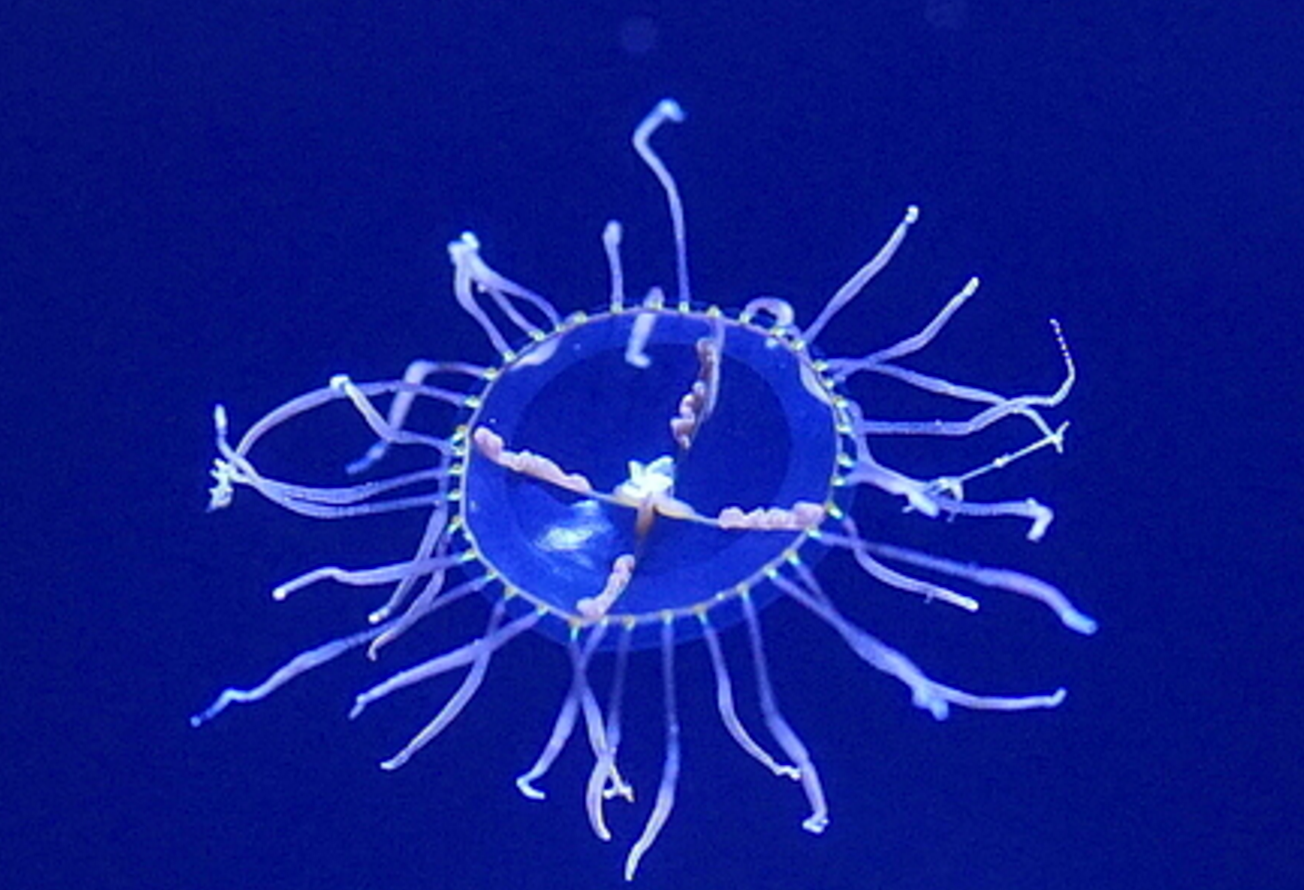N.J. to undertake 30-day clinging jellyfish study

(Image: opencage.info via Creative Commons)
We’ll soon know more about the recent appearance of clinging jellyfish in some Jersey Shore waterways.
In partnership with Montclair State University, the state Department of Environmental Protection will soon undertake a 30-day study to determine the distribution and prevalence of clinging jellyfish, a dime-to-quarter sized and invasive jellyfish that packs a powerful sting.
[RELATED: 6 things to know about clinging jellyfish]
Dozens were spotted in the Shrewsbury River and captured earlier this week, and one was confirmed in the Manasquan River. News about the species began earlier this month when a fisherman collected one near the Point Pleasant Canal.
“While the marine environment is one of change, we hope this important study will help us increase our understanding of the presence of clinging jellyfish in these areas and to ultimately better inform the public,” DEP Commissioner Bob Martin said in a release.
Crews will systemically trawl waters to collect jellyfish that may be present, deploy artificial sea grass mats to see if they attract clinging jellyfish, and perform genetic analysis.
“Given that this species has not been recorded in New Jersey, we need to understand the distribution and life history to establish a baseline,” said Dr. Paul Bologna, an associate professor of biology at Montclair. “This will support the development of public education and management strategies.”
Clinging jellyfish are not known to inhabit ocean beaches. Rather, they prefer attaching to submerged aquatic vegetation and algae in back bays and rivers — areas not heavily used for swimming, according to a state release.
If stung by a clinging jellyfish:
Apply white vinegar to the affected area to immobilize any remaining stinging cells.
Rinse the area with salt water and remove any remaining tentacle materials using gloves or a thick towel.
A hot compress can then be applied to alleviate pain.
WHYY is your source for fact-based, in-depth journalism and information. As a nonprofit organization, we rely on financial support from readers like you. Please give today.

